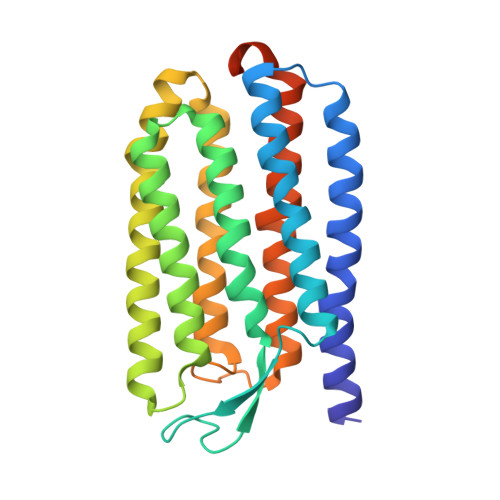Structure of Halorhodopsin from Halobacterium Salinarum in a New Crystal Form that Imposes Little Restraint on the E-F Loop.
Schreiner, M., Schlesinger, R., Heberle, J., Niemann, H.H.(2015) J Struct Biol 190: 373
- PubMed: 25916754
- DOI: https://doi.org/10.1016/j.jsb.2015.04.010
- Primary Citation of Related Structures:
5AHY, 5AHZ - PubMed Abstract:
Halorhodopsin from the halophilic archaeon Halobacterium salinarum is a membrane located light-driven chloride pump. Upon illumination Halorhodopsin undergoes a reversible photocycle initiated by the all-trans to 13-cis isomerization of the covalently bound retinal chromophore. The photocycle consists of several spectroscopically distinct intermediates. The structural basis of the chloride transport mechanism remains elusive, presumably because packing contacts have so far precluded protein conformational changes in the available crystals. With the intention to structurally characterize late photocycle intermediates by X-ray crystallography we crystallized Halorhodopsin in a new crystal form using the vesicle fusion method. In the new crystal form lateral contacts are mediated by helices A and G. Helices E and F that were suggested to perform large movements during the photocycle are almost unrestrained by packing contacts. This feature might permit the displacement of these helices without disrupting the crystal lattice. Therefore, this new crystal form might be an excellent system for the structural characterization of late Halorhodopsin photocycle intermediates by trapping or by time resolved experiments, especially at XFELs.
Organizational Affiliation:
Department of Chemistry, Bielefeld University, Universitätsstraße 25, 33615 Bielefeld, Germany.

















